The 7 most disturbing moments from Apple TV’s “John Lennon: Murder Without a Trial”
John Lennon’s influence was bigger than words could ever describe, so much so that his death shook the world to its core.
The esteemed member of The Beatles, who is also hailed as one of the greatest music legends of all time, was shot and killed in front of his New York City residence in December 1980. What followed was public uproar as fans mourned the loss and inquired why anybody would be compelled to kill Lennon in the first place.
Lennon’s assailant was identified as Mark David Chapman, who was infatuated with Lennon but also, resented him due to Lennon’s religious stance (specifically his highly publicized 1966 remark about the Beatles being “more popular than Jesus”). Chapman ultimately pleaded guilty and was sentenced to a prison term of 20 years to life.
The high-profile murder along with its aftermath are all explored in the AppleTV+ docuseries “John Lennon: Murder Without a Trial.” Over the course of three episodes, the series spotlights several key figures who witnessed Lennon’s assassination — including investigators, police officers and those who came in contact with him moments after he was shot — along with Lennon’s closest acquaintances. There’s also archival footage and recordings of Chapman, which have never been publicly released.
Here are the seven most shocking moments from the series:
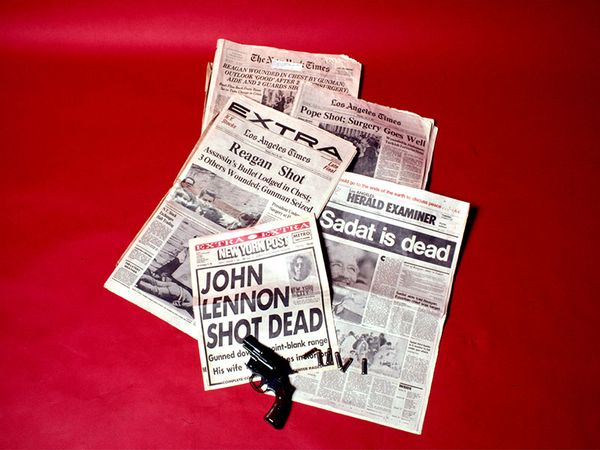 Headlines from New York Times, Los Angeles Times, Los Angeles Herald Examiner and the New York Post showing headlines of famous people being shot and killed March 18, 1989. (Photo by Paul Harris/Getty Images)
Headlines from New York Times, Los Angeles Times, Los Angeles Herald Examiner and the New York Post showing headlines of famous people being shot and killed March 18, 1989. (Photo by Paul Harris/Getty Images)Jay Hastings — a former doorman at the Dakota, the New York City apartment building that Lennon called home during his final days — recalled what happened moments after Lennon was shot five times by Mark David Chapman on Dec. 8, 1980.
“He goes, ‘I’m shot,’ had blood coming out of his mouth already and just collapsed on the floor,” Hastings said. “I half-rolled him to his back and took his glasses off, put ’em’ on the desk. And Yoko was screaming, you know, ‘Get an ambulance, get an ambulance, get an ambulance!’”
In an exclusive interview with People, Hastings said he approached Chapman when he learned the assailant was still outside and unarmed. He noticed Chapman “facing the wall, doing something . . . He was reading a book.” The book was later revealed to be “Catcher in the Rye.”
When the police arrived, they initially thought Hastings was the killer: “I looked a little crazy, I already had blood on my hands, I just had my shirt on, my white shirt with no tie.” Chapman was later identified as the culprit. He was arrested and ultimately sentenced to 20-years-to-life for shooting Lennon.
 Flowers and candles are left on the “Imagine” memorial in honor of John Lennon on the 40th anniversary of his death at Strawberry Fields in Central Park on December 08, 2020 in New York City. (Noam Galai/Getty Images)
Flowers and candles are left on the “Imagine” memorial in honor of John Lennon on the 40th anniversary of his death at Strawberry Fields in Central Park on December 08, 2020 in New York City. (Noam Galai/Getty Images)Lennon was rushed to Roosevelt Hospital, known today as Mount Sinai West, where hospital workers spent 45 minutes trying to find “some flicker of life” before announcing Lennon’s death.
“You could’ve heard a pin drop,” Barbara Kammerer, a nurse present at the scene, said. “You still want to do more, but now you know you stop and there’s nothing to say really, unfortunately. It’s just very, very quiet.”
Kammerer’s co-worker, emergency room nurse Deartra Soto, said that Lennon’s greatest hit song managed to find him during his final moments of life: “When [doctors] called [the time of death], and it was over, and we walked out of that room, the Muzak was playing ‘Imagine.’”
“That was everybody’s ‘Oh s**t’ moment,” Kammerer said.
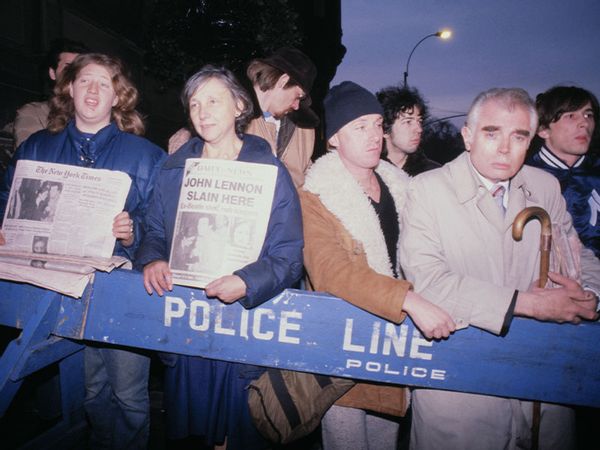 Distraught fans of ex-Beatle John Lennon gather outside his apartment building, late December 8, after he was gunned down. (Getty images/Bettmann)
Distraught fans of ex-Beatle John Lennon gather outside his apartment building, late December 8, after he was gunned down. (Getty images/Bettmann)News reports identified Chapman as a 25-year-old Beatles fan who was obsessed with Lennon’s lifestyle and public persona. Chapman was described as “an unemployed security guard from Honolulu,” “a freelance photographer from Honolulu,” and a former housekeeper and printer at the Castle Memorial Hospital.
Police discovered that Chapman had been staying at the Sheraton Hotel the night before Lennon’s murder. In his hotel room, Chapman laid out several items, including pictures and certain personal possessions, on his dresser. The items included his passport, an 8-track tape of the music of Todd Rundgren, a Bible open to “The Gospel According to John,” a small “Wizard of Oz” poster and a letter from a former YMC supervisor at Fort Chaffee (where Chapman had worked with Vietnamese refugees).
At this point, some investigators believed Lennon’s murder was premeditated. The items, along with their display and careful placement, proved Chapman had both planned the killing and anticipated the police investigation.
Chapman was eventually taken to Bellevue Hospital Prison Ward for psychiatric evaluation. He was greeted by Assistant Commissioner of Correction Ed Hershey, who recalled Chapman’s “normal” looks and calm demeanor.
“He almost looked at peace,” Hershey recalled. “Boy, he did not portray any emotion at all.”
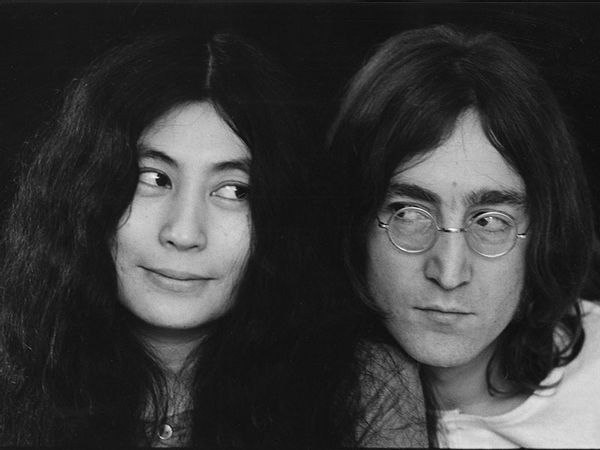 Japanese-born artist and musician Yoko Ono and British musican and artist John Lennon (1940 – 1980), December 1968. (Susan Wood/Getty Images)
Japanese-born artist and musician Yoko Ono and British musican and artist John Lennon (1940 – 1980), December 1968. (Susan Wood/Getty Images)“I’ve never expressed this before. One of the things that Yoko asked me was to look into the various theories, the conspiracy theories after John’s murder,” confessed Elliot Mintz, a family friend of Lennon’s.
Because Lennon was incredibly outspoken about his stance against Richard Nixon and the Vietnam War, some fans believed hidden political forces were to blame for Lennon’s death. FBI files revealed that Lennon was considered a political threat by the Nixon administration. At one point, both Ono and Lennon were convinced that their Dakota residence was bugged.
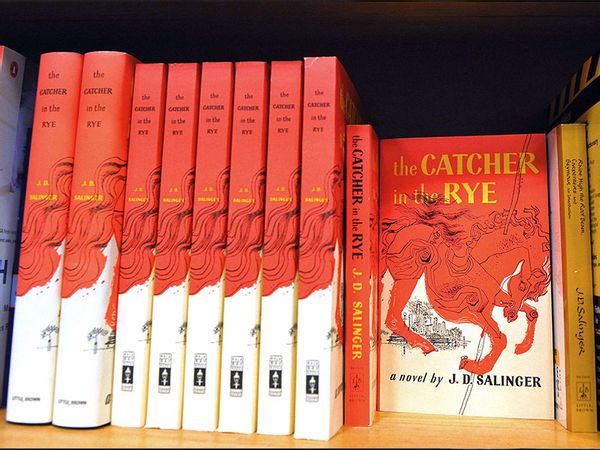 Copies of “The Catcher in the Rye” by author J.D. Salinger at a bookstore in Washington, DC. (MANDEL NGAN/AFP via Getty Images)
Copies of “The Catcher in the Rye” by author J.D. Salinger at a bookstore in Washington, DC. (MANDEL NGAN/AFP via Getty Images)In preparation for trial, Chapman’s legal team frequently visited him in prison to build his defense. Each conversation was recorded but never shared publicly.
In one such conversation (played for the very first time in the documentary), Chapman revealed that he thought “I would turn into somebody if I killed somebody.
“You know the book ‘The Catcher in the Rye’? I had that book on me, you know? I thought that I would turn into the character of the book . . . Holden Caulfield,” Chapman is heard telling his attorney David Suggs.
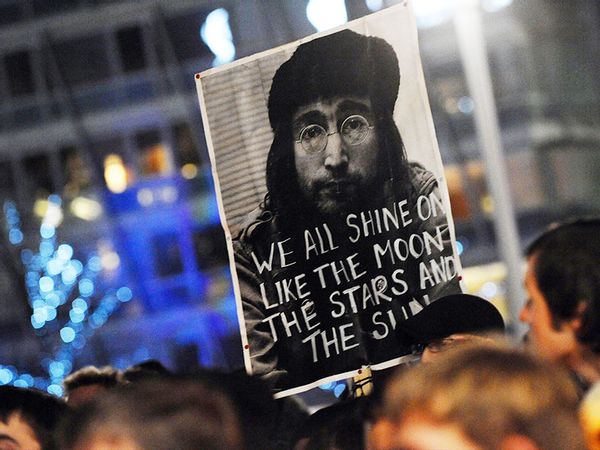 People take part in a candle lit vigil in Liverpool, north-west England on December 8, 2010 to mark the 30th anniversary of the death of former Beatles singer John Lennon. (PAUL ELLIS/AFP via Getty Images)
People take part in a candle lit vigil in Liverpool, north-west England on December 8, 2010 to mark the 30th anniversary of the death of former Beatles singer John Lennon. (PAUL ELLIS/AFP via Getty Images)Chapman’s new lawyer Jonathan Marks instructed him to enter a plea of not guilty by reason of insanity. But while under hypnosis, Chapman claimed he shot Lennon because the artist was “a phony.”
When asked to recount Lennon’s murder, Chapman said he saw a black limo pull up to the Dakota while sitting on the curb. He first saw Ono, then Lennon.
“I see a struggle,” Chapman said. “Part of me didn’t want to do it. Part of me did. I had a voice in my head, saying, ‘Do it! Do it! Do it!’” He then walked over to Lennon and began firing: “Took the gun out of my pocket and aimed at him and just fired away, all five shots. It felt like it was not me but it was me.”
In the tape recording of the hypnosis session, Chapman explained that the reason why he targeted Lennon was because of his signature catchphrase: “All you need is love.”
“All you need is love and $250 million. He was the biggest, phoniest bastard that ever lived,” Chapman said. “I wasn’t about to let the world endure 10 more years of his menagerie of bulls**t.”
In addition to Lennon, Chapman thought about killing other major public figures, including David Bowie, Johnny Carson, Paul McCartney, Ronald Reagan and Elizabeth Taylor.
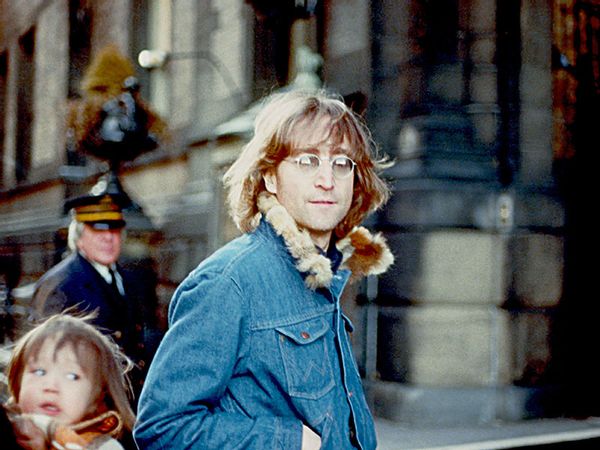 Former Beatle John Lennon poses for a photo with his wife Yoko Ono and son Sean Lennon in 1977 in New York City, New York. (Vinnie Zuffante/Getty Images)
Former Beatle John Lennon poses for a photo with his wife Yoko Ono and son Sean Lennon in 1977 in New York City, New York. (Vinnie Zuffante/Getty Images)Hours before Lennon was shot, he and Ono were finishing their album “Double Fantasy.” Lennon also spoke with RKO radio producer Laurie Kaye, telling her, “I consider my work won’t be finished until I am dead and buried. And I hope that’s a long, long time . . .”
After Lennon was shot, his final words were simply, “I’m shot.” Richard Peterson, a taxi driver who was present at the scene of the crime, said he momentarily thought he was being filmed for a movie. But that was far from the truth:
“I thought they were making a movie. But I didn’t see no lights or cameras or anything,” Peterson said. “So, I realized, ‘Hey, this ain’t no movie.’”
“John Lennon: Murder Without A Trial” is currently available for streaming on Apple TV+. Watch a trailer for it below, via YouTube:
Read more
about John Lennon:

